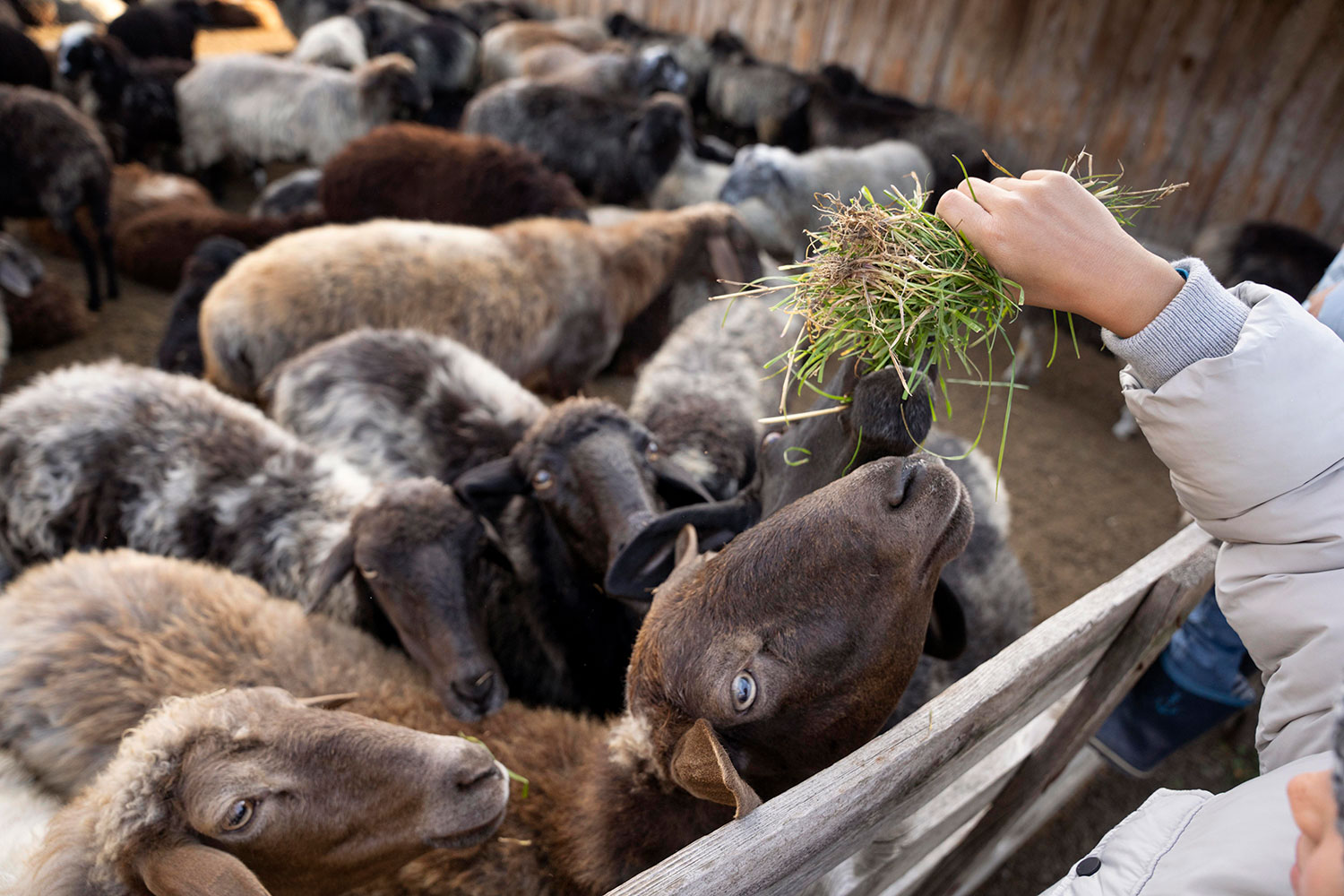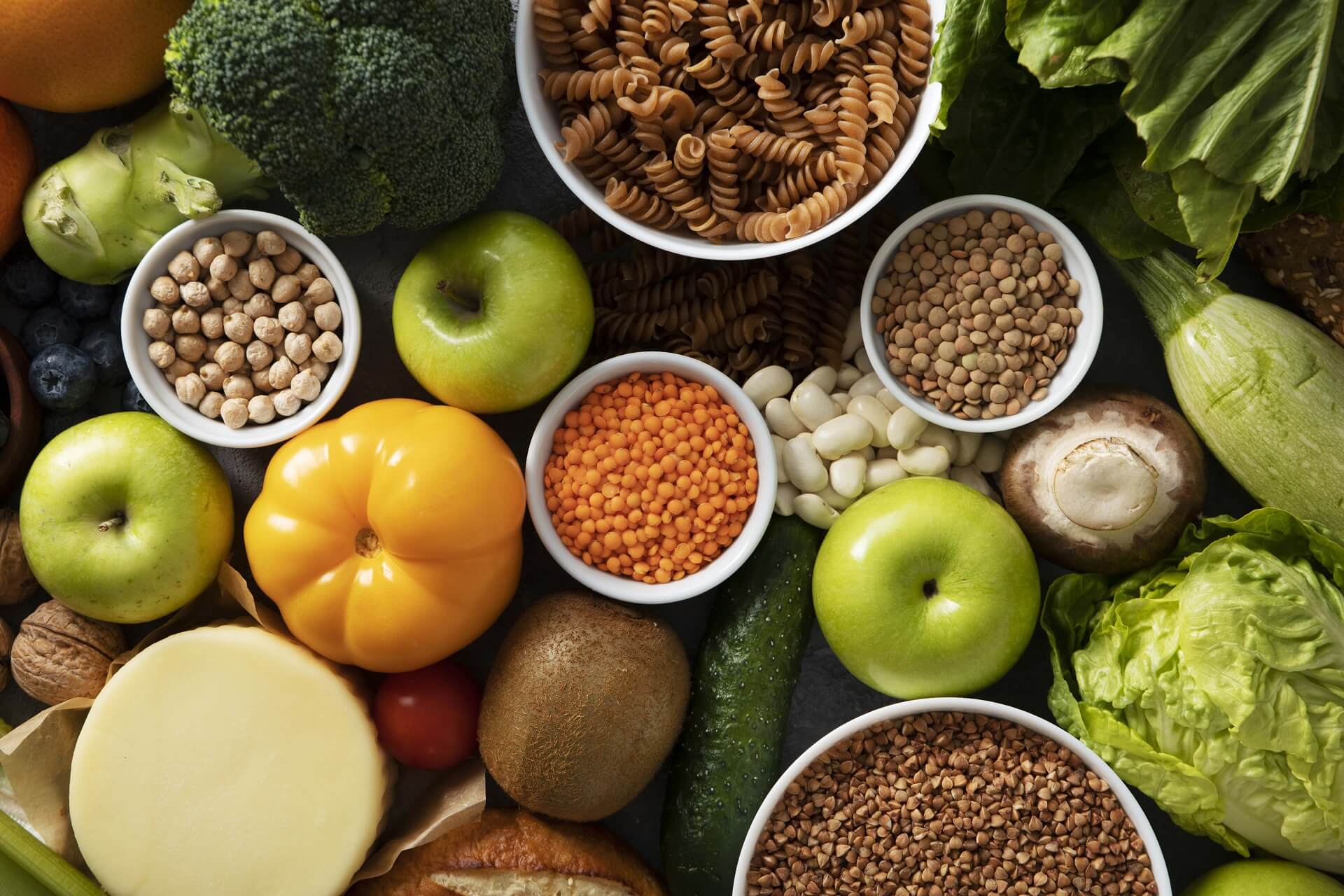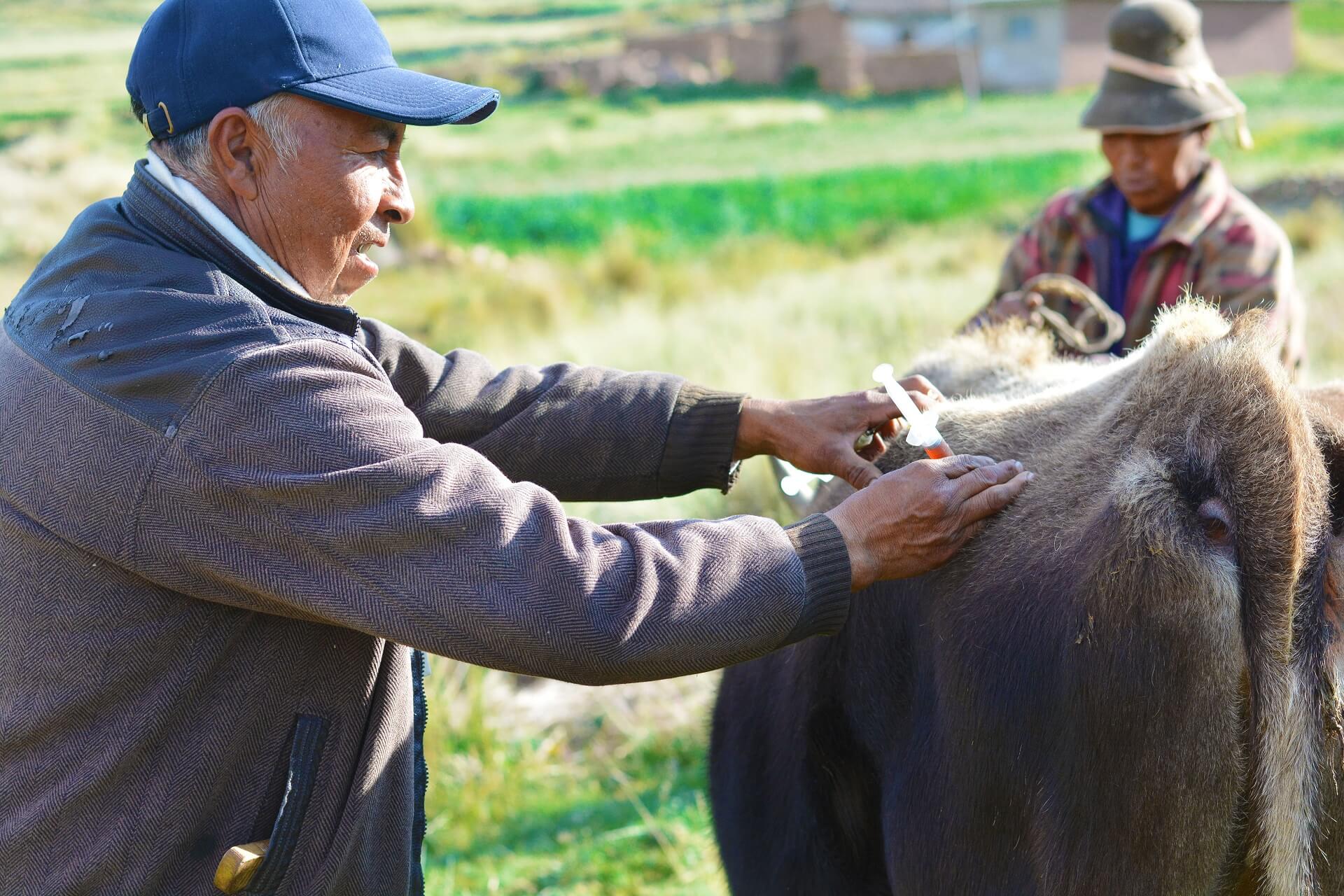
HOW TO REDUCE METHANE EMISSIONS?
To deliver the urgent reductions in methane emissions that are needed, governments need to use all available solutions to reduce emissions from livestock farming and reduce global livestock numbers.
According to the UN Global Methane Assessment, the solutions with the greatest potential to reduce emissions from the food system are:
- improved livestock management;
- the adoption of healthier diets with less meat and dairy;
- the reduction of food loss and waste.
Collectively these measures could reduce methane emissions by up to 65–80 Mt/yr over the next few decades. By comparison, current technological solutions such as feed additives, deliver more limited and uncertain mitigation potential – estimated between 4–42 Mt/yr.
SOLUTIONS
Improved livestock management
Improved nutrition (e.g. feeding cattle more easily digestible legume-rich pasture), selective breeding, better access to veterinary services and pro-active herd health planning can allow farmers to increase production without increasing herd size and methane emissions.
The potential is particularly great in the Global South, where livestock tend to graze on poor quality pasture and veterinary services are unaffordable for many farmers. However, realising this potential will require substantial investment and support.
Feed additives
A number of natural and synthetic feed additives have been shown to be effective in reducing methane emissions, when fed to cattle at least once a day. However, the results vary considerably depending on the supplement and the production system and there is currently no way of effectively administering feed supplements to animals raised on pasture, where most cattle spend the majority of their lives.
Questions also remain about the long-term health impacts, effectiveness, and public acceptance of some feed supplements as well as the extent to which it is possible to scale up production. For example, some seaweed supplements contain known animal carcinogens.
Manure management
Improving the way manure is collected, stored, treated and used can help cut methane emissions and provide a cheap fertiliser for crops – reducing the need for costly synthetic fertilisers.
Manure can also be used to produce biogas or biomethane, turning a waste product into heat, fuel or electricity. For smallholder farmers, in the Global South, small-scale biodigesters can be used to produce cooking fuel – a cheaper, healthier and more environmentally friendly alternative to wood or charcoal.
Large scale biodigesters face more challenges including:
- high costs and a heavy reliance on public subsidies;
- leaks from biogas and biomethane supply chains;
- pollution linked to ammonia emissions from the resulting digestate;
- the need for a large quantity of manure as feedstock could fuel demand for large industrial farm facilities.
Dietary change
Encouraging a shift to healthier diets with less meat and dairy is an important part of the solution in countries where consumption is high.
Shifting to a diet that is richer in plant-based foods, such as fruits, vegetables and whole grains, is also linked to lower risks of cancer, cardiometabolic diseases and death compared to diets based on ultra-processed foods and red meat.
Governments can support dietary shifts through the use of fiscal incentives, by incorporating sustainability into national dietary health guidelines, and setting standards for public food procurement to normalise lower meat diets.
Given 77% of agricultural land is used for livestock production, reducing meat consumption could also free up vast tracts of land for restoration, increasing its carbon sequestration potential, and greatly improving our chances of limiting global heating to 1.5°C.

A HOLISTIC APPROACH
The most effective approach to tackling livestock methane will differ from country to country and farm to farm and will balance the need for emissions reductions, with the need to protect nature, promote sustainable development, and support animal welfare.
- In many low-income countries, livestock farming is a critical source of income for small-scale producers and an important source of protein for food-insecure communities. Investing in improved livestock management could help increase meat and dairy production and support rural development without increasing emissions.
a - In high-income countries where overconsumption of meat and dairy is already a problem, healthier diets – coupled with a shift away from high-intensity production – could deliver significant benefits for air and water quality, biodiversity, human health, animal welfare and the climate.
A JUST TRANSITION
Action to tackle livestock methane needs to be carefully planned to ensure that the costs and benefits are distributed fairly and equitably.
The most vulnerable groups, including people on low-incomes, workers in the meat and dairy industry, and small-scale producers, need to be protected and supported through the transition to more sustainable production, by both governments and industry.

A GLOBAL EFFORT
Existing solutions can deliver significant methane reductions if governments put the funding and policies in place to make them happen. For example, improving livestock management in the Global South will require significant investment in skills, services, and supply chains as well as more effective land use policies.
